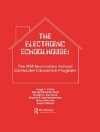From clandestine images of Jewish children isolated in Nazi ghettos and Japanese American children incarcerated in camps to images of Native children removed to North American boarding schools, classroom photographs of schoolchildren are pervasive even in repressive historical and political contexts. School Photos in Liquid Time offers a closer look at this genre of vernacular photography, tracing how photography advances ideologies of social assimilation as well as those of hierarchy and exclusion. In Marianne Hirsch and Leo Spitzer’s deft analysis, school photographs reveal connections between the histories of persecuted subjects in different national and imperial centers.
Exploring what this ubiquitous and mundane but understudied genre tells us about domination as well as resistance, the authors examine school photos as documents of social life and agents of transformation. They place them in dialogue with works by contemporary artists who reframe, remediate, and elucidate them. Ambitious yet accessible, School Photos in Liquid Time presents school photography as a new access point into institutions of power, revealing the capacity of past and present actors to disrupt and reinvent them.
Despre autor
Leo Spitzer is K. T. Vernon Professor of History Emeritus, Dartmouth College. He is the author of Hotel Bolivia: The Culture of Memory in a Refuge from Nazism (Hill & Wang: Farrar, Straus & Giroux, 1998), Lives in Between: Assimilation and Marginality in Austria, Brazil and West Africa (Cambridge, 1990; reprinted 1999, Hill & Wang), The Creoles of Sierra Leone: Responses to Colonialism (Wisconsin 1974), and is co-editor with Mieke Bal and Jonathan Crewe of Acts of Memory: Cultural Recall in the Present (UPNE, 1999). He is also co-author with Marianne Hirsch of Ghosts of Home: The Afterlife of Czernowitz in Jewish Memory (University of California Press, 2010).












